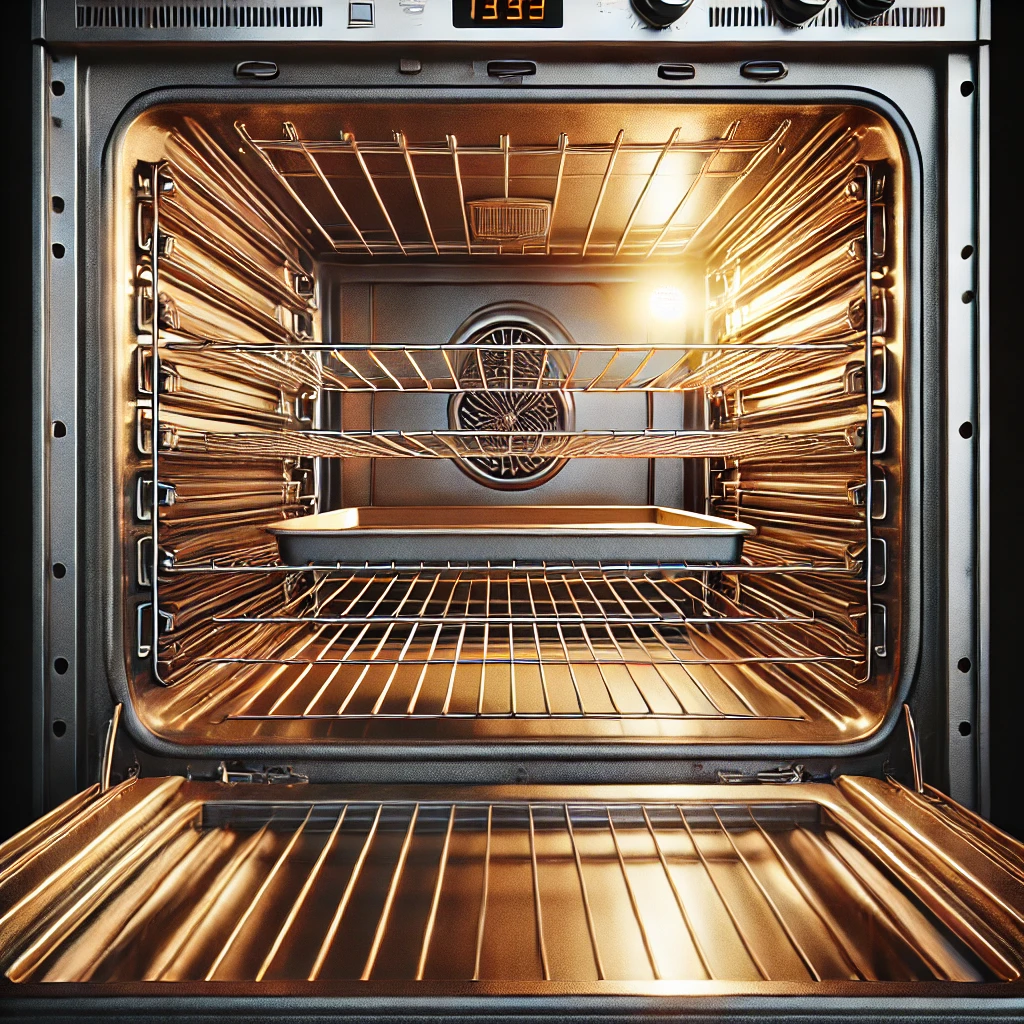
Five Reasons Your Oven Isn't Baking Evenly
Have you ever baked a cake or a tray of cookies, only to find that one side is browned perfectly while the other is still undercooked? Uneven baking is a common issue, but it’s also one that can be frustrating when you’re aiming for perfect results. Here are five reasons why your oven might not be baking evenly and what you can do to fix it.
1. Hot Spots in the Oven
Just like some parts of a pan heat up faster than others, certain areas inside your oven can get hotter than others. These hot spots can cause uneven baking, especially if you’re baking multiple trays of food or a large item like a roast.
Why It Happens:
- Older ovens or ovens with uneven heat distribution can have inconsistent temperatures across the cooking surface. Heat may be stronger near the heating elements or in specific corners of the oven.
How to Fix It:
- Rotate Your Food: Halfway through the baking process, rotate your trays or dishes. This helps ensure even exposure to the heat across all sides.
- Use an Oven Thermometer: An oven thermometer can help you pinpoint any temperature discrepancies inside your oven. Place it in different spots to check for hot spots, then adjust your baking strategy accordingly.
2. Incorrect Rack Placement
Oven racks play an important role in how heat circulates around your food. If the rack is too high or too low, it can lead to uneven baking results, such as over-browning on the top or undercooked bottoms.
Why It Happens:
- Each oven rack position offers different heat exposure. For example, items placed near the top of the oven may brown faster due to the proximity to the top heating element, while items near the bottom may bake more slowly.
How to Fix It:
- Centre Your Racks: For most baking tasks, placing the rack in the centre of the oven provides the most even heat distribution. This ensures that heat surrounds your dish from all sides.
- Follow Recipe Guidelines: Some recipes specify a rack position for a reason—whether it’s baking closer to the top for crisping or the middle for even heating.
3. Uncalibrated Oven Temperature
Your oven’s thermostat is supposed to maintain the set temperature, but over time, it can become inaccurate. This means your oven might be running too hot or too cold, leading to uneven or inconsistent baking results.
Why It Happens:
- Thermostats can wear down, especially in older ovens, resulting in inaccurate temperature readings.
How to Fix It:
- Use an Oven Thermometer: Place an oven thermometer inside and preheat your oven. Compare the temperature reading on the thermometer to your oven’s set temperature. If there’s a significant difference, your oven might need to be recalibrated.
- Calibrate the Oven: Check your oven’s user manual for instructions on how to recalibrate its temperature settings, or consult a professional if necessary.
4. Faulty Heating Elements
Most ovens use two heating elements: one at the bottom for baking and one at the top for broiling. If one of these elements isn’t working properly, it can cause uneven cooking.
Why It Happens:
- Heating elements can burn out or malfunction over time, leading to uneven heat distribution inside the oven. If the bottom element isn’t working, for example, the oven might rely on the top element, which could result in over-browned tops but undercooked centres.
How to Fix It:
- Check the Heating Elements: When the oven is cool, visually inspect both the top and bottom heating elements for signs of damage or uneven colouring, which could indicate a malfunction. If one element looks damaged, it may need to be replaced.
- Test with Broiling and Baking: Turn your oven to both the bake and broil settings to ensure both elements heat up. If one doesn’t, it’s time for a repair or replacement.
5. Blocked or Poor Air Circulation
Good air circulation is key to even baking. When heat is able to move freely around your food, it cooks evenly. However, overcrowding the oven or blocking the fan (in convection ovens) can lead to uneven baking results.
Why It Happens:
- Placing too many trays or dishes in the oven at once can block heat and air from circulating properly. Similarly, oversized dishes placed too close to the walls or the oven door can cause heat to distribute unevenly.
How to Fix It:
- Avoid Overcrowding: Make sure there’s enough space between dishes and the oven walls to allow heat to circulate. If you’re baking multiple trays, stagger them so air can flow around each one.
- Use Convection Mode (If Available): If your oven has a convection setting, using it can help circulate heat more evenly. Just remember to reduce the temperature by about 25°F (or 10-15°C) to avoid overcooking when using convection.
Conclusion
Uneven baking can be caused by several factors, including rack placement, faulty heating elements, and even hot spots in your oven. By identifying the root cause and adjusting your baking habits—such as rotating dishes, ensuring proper air circulation, or recalibrating your oven—you can achieve more consistent, evenly baked results. A few small changes can make a big difference in your kitchen, leading to perfectly baked cakes, cookies, and more.

